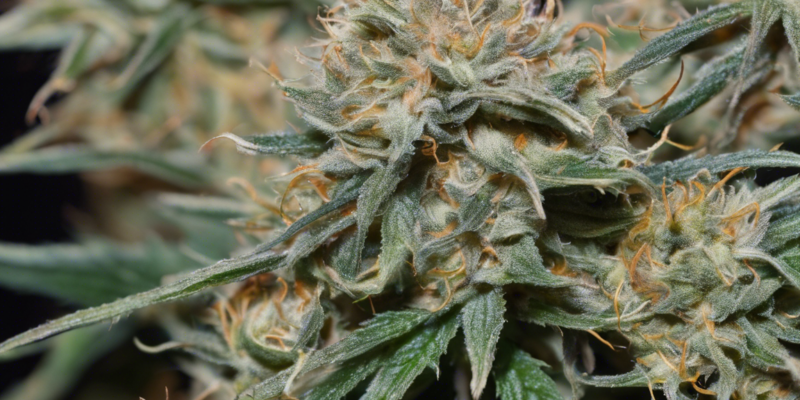Have you ever wondered about the doppelganger strain – the mysterious and intriguing phenomenon that has captured the curiosity of many plant enthusiasts? In the world of botany, where diversity and complexity abound, the doppelganger strain stands out as a unique and enigmatic occurrence. In this comprehensive guide, we will delve into the depths of this phenomenon, uncovering its intricacies, exploring its significance, and shedding light on its implications for the world of plants.
Understanding the Doppelganger Strain
What is the Doppelganger Strain?
The doppelganger strain, also known as the “double” or “twin” strain, refers to a rare genetic mutation that results in the formation of plants that are nearly identical in appearance to their parent plant. This phenomenon occurs when a plant’s genetic material undergoes a spontaneous change, leading to the production of a clone that closely resembles the original plant in all aspects.
How Does the Doppelganger Strain Occur?
The doppelganger strain typically arises due to genetic mutations or abnormalities that occur during the plant’s growth and development. These mutations can affect various aspects of the plant’s physiology, such as its leaf shape, flower color, or growth pattern, leading to the formation of a plant that closely mimics the parent plant.
Significance of the Doppelganger Strain
Botanical Curiosity and Aesthetics
The doppelganger strain holds a special allure for plant enthusiasts and collectors due to its unusual and captivating nature. Plants that exhibit this phenomenon are often prized for their unique characteristics and striking resemblance to their parent plant, making them highly sought after in the world of botanical collections.
Genetic Diversity and Adaptation
From a scientific standpoint, the doppelganger strain provides valuable insights into the genetic diversity and adaptability of plants. By studying these genetic mutations and their effects on plant morphology, researchers can gain a better understanding of how plants evolve and adapt to their environments over time.
Implications of the Doppelganger Strain
Hybridization and Plant Breeding
The doppelganger strain has significant implications for plant breeding and hybridization programs. By harnessing the genetic mutations that give rise to doppelganger plants, breeders can develop new cultivars with desirable traits and characteristics, leading to the creation of unique and improved plant varieties.
Conservation and Preservation
In the realm of conservation biology, the doppelganger strain can play a crucial role in the preservation of rare and endangered plant species. By identifying and propagating plants that exhibit this phenomenon, conservationists can help safeguard the genetic diversity of threatened plant populations and ensure their survival for future generations.
Exploring the Diversity of Doppelganger Plants
Leaf Variations
One of the most striking features of doppelganger plants is their diverse leaf variations. From variegated patterns to unique shapes and sizes, these plants exhibit a wide range of leaf characteristics that set them apart from their parent plants.
Flower Mimicry
In some cases, doppelganger plants may also display flower mimicry, where their blooms closely resemble those of their parent plants. This mimicry can be so uncanny that it becomes challenging to distinguish between the two plants based on their flowers alone.
Growth Habits
The growth habits of doppelganger plants can vary significantly from those of their parent plants. Some doppelganger plants may exhibit more vigorous growth, while others may have a more compact or sprawling growth habit, adding to their overall appeal and intrigue.
Cultivating Doppelganger Plants
Propagation Techniques
Propagating doppelganger plants can be an exciting and rewarding endeavor for plant enthusiasts. One common method for propagating these plants is through stem cuttings, where a piece of the plant’s stem is removed and placed in a growing medium to develop roots and form a new plant.
Care and Maintenance
Like their parent plants, doppelganger plants require proper care and maintenance to thrive. Providing them with adequate sunlight, water, nutrients, and environmental conditions will help ensure that they continue to exhibit their unique traits and characteristics.
Pruning and Training
Pruning and training doppelganger plants can help enhance their growth habits and appearance. By selectively removing branches or shaping the plant’s foliage, growers can encourage the plant to develop a more symmetrical and aesthetically pleasing form.
FAQs about the Doppelganger Strain
- Can doppelganger plants occur in all types of plant species?
-
While doppelganger plants can occur in a wide range of plant species, they are more common in certain types of plants, such as succulents and ornamental foliage plants.
-
Are doppelganger plants genetically identical to their parent plants?
-
Doppelganger plants are genetically similar but not identical to their parent plants, as they arise from genetic mutations that result in subtle differences in their characteristics.
-
Do doppelganger plants have any advantages over traditional plant varieties?
-
Doppelganger plants may have advantages in terms of their aesthetic appeal and uniqueness, making them desirable additions to botanical collections and landscapes.
-
Can doppelganger plants revert to their original form over time?
-
In some cases, doppelganger plants may revert to their original form due to changes in environmental conditions or genetic stability. Regular monitoring and care can help prevent reversion in these plants.
-
Are doppelganger plants more susceptible to pests and diseases?
- Doppelganger plants are not inherently more susceptible to pests and diseases than traditional plant varieties. However, proper care and maintenance are essential to ensure their health and well-being.
In conclusion, the doppelganger strain represents a fascinating and enigmatic aspect of the plant world, offering insights into the genetic diversity, adaptability, and beauty of plants. By exploring the mysteries of this phenomenon, we can gain a deeper appreciation for the wonder and complexity of the natural world and the endless possibilities it holds for discovery and exploration.

